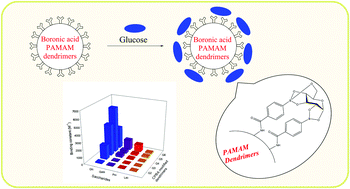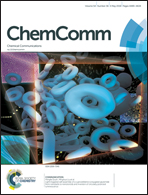A selective glucose sensor: the cooperative effect of monoboronic acid-modified poly(amidoamine) dendrimers†
Abstract
Selective glucose binding was identified through five generations of monoboronic acid-functionalized PAMAM dendrimers. The best selectivity obtained when using G3 dendrimers (1b) generated 71.1, 94.9, and 1309 times stronger binding than when using galactose, fructose, and lactose, respectively. Further experiments using dendrimer analogues and glucose derivatives suggested that two nearby monoboronic acids cooperatively bound one glucose.



 Please wait while we load your content...
Please wait while we load your content...